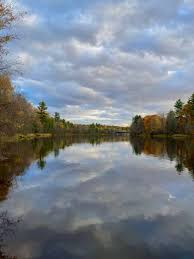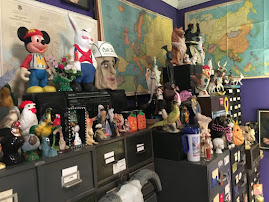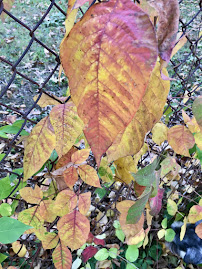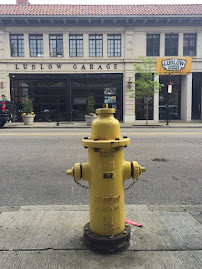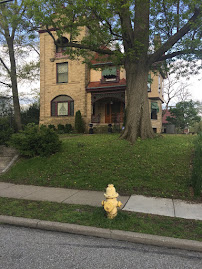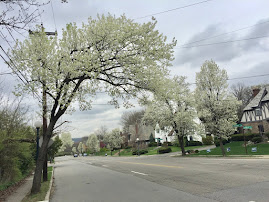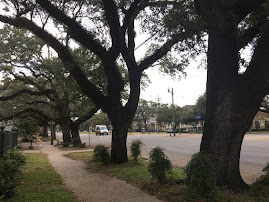Map
of Green Bay
Dear George,
Menominee and Marinette are
located on the Green Bay shore at the mouth of the Menominee River. The bay
is a huge presence and resource for residents and visitors. We spent
hundreds of hours on Green Bay in our youth — swimming at the O’Hara’s; doing
fireworks at the Caleys; going to the Sawyer hunting camp; visiting with the
Mars, Steffkes, and Jacobsens. As teenagers we hung out on sunny days at
Marina Park, picnicked at Henes Park, and swam at Hinker’s coal dock.
We’re pretty landlocked here in Cincinnati by comparison, and I’m always struck
by the natural beauty of the bay and its environment when we return home for a
visit. Here are some facts about this remarkable body of water.
Bay
view, Henes Park, Menominee
Green Bay is a huge inlet
extending off of northwestern Lake Michigan. It’s 120 miles long
and averages about 14 miles wide. The bay’s northern end is at Big Bay de
Noc near Escanaba, and its southern tip is at the mouth of the Fox River at
Green Bay, Wisconsin. The bay’s shoreline stretches along two counties in
the U.P. (Delta, Menominee) and five counties in northeastern Wisconsin
(Marinette, Oconto, Brown, Kewaunee, and Door). Green Bay is separated
from the rest of Lake Michigan by the U.P.’s Garden Peninsula to the north,
Wisconsin’s Door Peninsula to the south, and the chain of islands between the
two (Rock, Washington, St. Martin’s, and Summer Islands). With
1,626 square miles of area, Green Bay is Lake Michigan’s largest bay, and it’s
the largest fresh-water estuary in the world. Its average depth is 65
feet, and its maximum depth, located 4 miles west of Washington Island, is 176
feet. Green Bay is fed by eleven rivers and streams, the most important
of which are the Fox/Wolf, Peshtigo, Oconto, Menominee, and Escanaba
Rivers. One third of all the land that drains into Lake Michigan passes
through Green Bay first. (2, 6, 21)
Green Bay was first
explored by Europeans in the early 1600’s. Quebec governor Samuel de
Champlain had heard rumors of a strange race who called themselves “People of
the Sea,” and he believed that the area offered a short route to the Pacific
Ocean and China. Champlain selected Jean Nicolet to explore the area, and
Nicolet set off by canoe from Quebec in July 1634 with a crew of 7
Hurons. On arriving and first meeting Native Americans on the Green Bay
shore, Nicolet put on a damask robe embroidered with birds and flowers,
intending to be suitably dressed for the mandarins of the East. Despite
the disappointment of not finding the Orient, the land’s rich resources led
Nicolet to claim the area for the King of France. Nicolet named the bay
“La Bay des Punts” (“the Bay of the Stinkards”). The French had gotten
this name from their Indian guides who referred to the natives who lived near
Green Bay by a word meaning “Stinkers”, perhaps because of the smell of marshes
near the bay. The French also called the bay “Baie Verte” (Green Bay),
and the English adopted this name. (9, 19, 21)
The first European
settlements along the Green Bay coastline were located near the mouth of the
Fox River in the vicinity of the current city of Green Bay. Pere Claude
Allouez established the St. Francis Xavier mission in 1671 near what’s now the
city of De Pere, and Charles de Langlade, a half-French Ottawa chief, and his
father built a trading post on the Fox River at Green Bay in 1764. After
the Revolutionary War the Americans built Fort Howard on the same site.
Founded nearby in 1834 the city of Green Bay is the oldest city in the state of
Wisconsin. Fifty miles to the north along the Green Bay coast, fur trader
Louis Chappee was Menominee’s first European settler, establishing a trading
post on the Menominee River in 1796. Fur trader Louis A. Roberts and his
family were the first settlers along the bay at Escanaba in 1830. (7, 8,
9)
Freighter,
Marinette harbor
Shipping on Green Bay,
critical to the growth of lumber, iron ore, and shipbuilding industries, has
been important since the mid-1800s. The city of Green Bay has the bay’s
largest port, with 14 businesses spread along three miles of the Fox
River. The Port of Green Bay recorded 158 foreign and domestic ship
arrivals between April and December 2015, carrying approximately 2 million tons
of cargo. (17) The first known steamboat to arrive in Menominee was
the “New York” in 1836. Daily boats began running between Menominee and
the city of Green Bay in 1858, and the Green Bay and Menominee River Navigation
Co. was formed in 1867. In 1873 three twin city lumber companies bought
the steam-powered Bismarck and six barges, capable of transporting 3 million
feet of lumber. From that point on nearly all lumber from Menominee and
Marinette mills was transported by steamboat to Chicago via Green Bay and Lake
Michigan. Today Menominee’s harbor, located at the mouth of the Menominee
River, has 3,300 feet of pier structures and two miles of maintained channels.
The harbor gets 325,000 tons of domestic and international traffic a
year. Major commodities include pig iron, pulp and paper, and coal.
(1, 11)
Menekaunee
Bridge, Marinette
Green Bay and Lake Michigan
shipping, especially in the early days, was a dangerous enterprise.
According to the maritimetrails.org website, there have been 275 recorded vessel losses
in the Green Bay/Door County region (which includes Green Bay as well as the
Lake Michigan coast of Door County). The strait which links Lake Michigan
and Green Bay at the northern tip of Door County is known as Porte des Mortes,
or the Door of Death. In fact, that’s where Door County gets its name.
Some maritime historians conclude that the strait has had more shipwrecks
than any other section of fresh water in the world. The strait is narrow,
shoals extend far from the shore, Great Lakes winds are unpredictable, small
islands constitute hazards, and older sailing vessels weren’t as navigable as modern
motor boats. Famous shipwrecks at Death’s Door include the Fleeting in 1888 and
the A.P. Nichols, the Forest, and the J.E. Gilmore in 1892. (12, 24)
Marina,
Menominee
Green Bay, of course, is
highly popular for recreational boaters, and ports on Green Bay receive regular
visitors from Chicago, Milwaukee, and many other Lake Michigan locations.
The main U.P. harbors on Green Bay include Menominee, Escanaba, and
Gladstone. The Menominee marina has 261 slips and 20 inner wall-side
tie-ups. Wisconsin harbor towns on Green Bay include Marinette, Oconto,
Green Bay, Sturgeon Bay, and various Door County marinas (Bailey’s Harbor,
Sturgeon Bay, Egg Harbor, Fish Creek, Ephraim, Sister Bay, and Washington
Island). Several of our family friends owned powerboats or sailboats —
e.g., the O’Hara’s, Caleys, Hoods — and we’d go with them from time to time to
Door County or even as far as Mackinac Island.
Fishing
boats, Menekaunee (Marinette)
Green Bay is also a major
location for fishing, prized for its walleye, perch, and northern pike.
According to the Wisconsin DNR, fish in Green Bay south of Marinette and its
tributaries (the Menominee, Oconto, and Peshtigo Rivers) include: Walleye,
Northern pike, Rainbow trout, Lake whitefish, Sheepshead, Smallmouth bass, Chinook
salmon, Brown trout, Muskellunge, Carp, Sturgeon, White bass, Channel catfish,
White perch, Yellow perch, White sucker, and Burbot. (4) In Menominee
there is fishing at the downtown marina, at the mouth of the Menominee River,
and at Stephenson Island in Marinette. Walleye, brown trout, and
steelhead are prolific in the spring, and lake whitefish and Chinook salmon run
in the fall. The Hattie Street bridge is a popular place for lake
sturgeon fishing. Several of my grade school friends regularly fished for
perch at the breakwater in downtown Menominee. I joined them once in a
while, but I wasn’t very adept. (14)
Beach,
Henes Park, Menominee
Green Bay, of course, is
home to innumerable parks and beaches. According to wisconsintrails.com, 3 of Wisconsin’s 12 best beaches are located on Green Bay in Door
County: Peninsula State Park at Fish Creek; Portage Town Park at Sturgeon Bay;
and Whitefish Dunes State Park at Sturgeon Bay. (26) Menominee and
Menominee County Parks on Green Bay include: Menominee’s Great Lakes Memorial
Marina Park (1,100 ft. of waterfront), Veteran’s Memorial Park, John Henes Park
(2,600 ft. water frontage), Lighthouse Ann Arbor Park, the Menominee
Tourist Park, Airport Park (with a boat landing), Bailey Park (4,800 feet of
sand beach), Fox Park (6,000 ft. of frontage), Kleinke Park (24 acres), and
J.W. Wells State Park (974 acres). We’ve spent many happy hours at these
places, especially Marina Park, Henes Park, and Airport Park near Birch
Creek. Compared to the river, the bay pretty chilly, as is Lake Michigan
in general. Monthly average water surface temperatures measured at the
city of Green Bay are: June, 47.6 degrees; July, 59.5; August, 67.4; and
September, 63.6. However, the shallow coastline areas where most swimming
takes place are several degrees warmer than these figures. In addition to
the many beaches, the Hiawatha National Forest and the Menominee State Forest
lie along Green Bay’s northern shore in Menominee and Delta Counties.
(brit) (13, 18)
Door County, across the bay
from Menominee, is one of Wisconsin’s most popular tourist regions, and Katja
and I have done a couple of mini-trips there in recent years. Door
County’s summer population is ten times its year-round population.
Bordering the southeastern stretch of
Green Bay and Lake Michigan to its east, it's Wisconsin’s only
peninsula. Door County has 300 miles of shoreline. It’s well known
for its cherry and apple orchards. The peninsula’s main highways pass
through small resort towns that offer dining, shopping, wineries, and lodging
for tourists. Door County has five state parks, more than any other
county in the nation. With the completion of the Sturgeon Bay Ship Canal
in 1882, the northern half of the peninsula became an island. Sturgeon
Bay is known as the Great Lakes shipbuilding capital. (3, 5, 7, 15, 22)
North
Pier Light, Menominee
One of the more visible
landmarks from the Menominee shoreline is Chambers Island. Chambers Island is 7
miles off the coast of the Door Peninsula and 12 miles northeast of Menominee.
2,834 acres in size, the Chambers Island lighthouse operated from 1867
until its deactivation in 1961. The Catholic Church maintained a retreat
house on Chambers Island from 1951 until 2014, welcoming 62,000 guests over
that period. There are two dirt roads and a 1,200 foot gravel airport
runway on the island, but no commercial electricity. The 2000 census did
not report any permanent population. When I was 13 or 14 Bill Caley Sr.
took a group of us by boat to Chambers Island, and, like inhabitants from Lord
of the Flies, we set up our camp at
an isolated spot along the beach for a four day stay. (20)
Because of its warmer,
shallower waters, Green Bay is the most productive part of Lake Michigan for
fish, other aquatic life, and as a stopover for migrating birds. However,
it’s not without problems. The
bay’s health is at risk from wetland loss, invasive species like zebra mussels
and carp, urban and agricultural runoff of phosphorous and other nutrients from
farms, sewage treatment systems, yard fertilizers, and industry. As a
consequence, like Lake Erie and parts of the Gulf of Mexico, Green Bay is
developing a dead zone where there is so little oxygen that few or no fish or
other organisms can survive. This area begins 8 miles northeast of the
city of Green Bay and extends for 30 miles north to Peshtigo. (10)
The
beach at Schloegel’s Restaurant, Menominee
We plan to get together
with family members in Menominee later in the summer. We’ll drive up
through Chicago and Milwaukee and wind up traveling along the Green Bay
coastline, passing through the city of Green Bay, Oconto, Peshtigo, and
Marinette. In Menominee we’ll go to the downtown historic district and
check out the visiting boats in the marina. We’ll drive along First
Street with its myriad views of Green Bay and have whitefish for lunch at a
bayfront window booth at Schloegel’s. We might walk out on the pier to
the North Pier Light. We’ll cross the Menekaunee Bridge at the river’s
mouth and admire the Great Lakes freighters and the local fishing boats.
We’ll stop by Henes Park and go swimming with our grandkids at the beach.
We’ll spend time with our friends Bob and Lois A., watching the Green Bay sunset
from their spacious deck. Toward the end of our trip we might follow M-35
along the Green Bay shoreline up to Cedar River or Escanaba. Whatever the
exact agenda, we know in advance that Green Bay will offer much of the natural
beauty and enjoyment to our vacation experience.
Love,
Dave
SOURCES:


























































